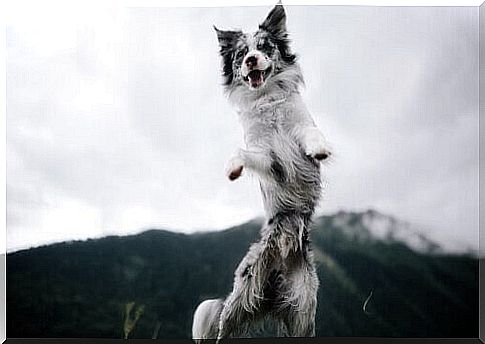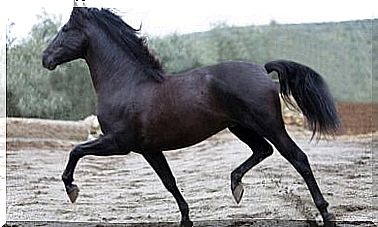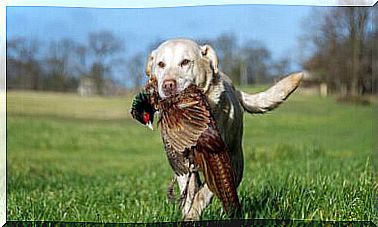Challenges We Face In Training Canine Behavior

Many believe that puppies that are already a certain age cannot ‘learn anything new’ and that only puppies can receive training. This couldn’t be further from reality. However, there are some challenges we encounter in dog behavior training that are worth knowing how to identify to reverse the situation.
Dog Behavior Training: What Causes Misbehavior
Whether we are a handler or simply want our pet to behave correctly, we may face certain challenges while training canine behavior.
Knowing the dog in question is essential to achieve good results, but also for the lessons to be maintained over time. Furthermore, patience and commitment are vital to avoid animal behavioral problems. After all, everyone has their own time to learn and assimilate new orders.
In fact, behavior problems in dogs can be caused by many reasons and can appear at any time in their lives, although they appear with greater intensity in childhood. Nor can we ignore genetics – some breeds are more prone to disobedience, such as the Afghan Hound or Chow-chow – nor the situations the animal has gone through.
So, if a puppy is very scared because she lives on the street, her puppies will likely have this ‘flaw’, even if they have been adopted. Likewise, if an animal has been punished by its former owners, it is more likely to try to attack or hide in the presence of certain objects that remind it of its trauma.
At the same time, we must also take into account the dog’s socialization. This plays a very important role in your behavior. Dogs that have not had contact with other animals as puppies can be more fearful, more nervous, and more disobedient.
Main challenges in training canine behavior
When we want to teach our pet and give him certain orders, it is necessary to know him well and know about his past, even if he is still a little puppy that has just arrived at our house. Knowing your history can help us to avoid certain behaviors that get in the way of dog behavior training. In this sense, the main behavioral problems of dogs are:
1. Aggressiveness
It appears in front of other animals or directed at people. First it growls, then it barks, and finally it tries to bite. An aggressive dog can be a problem when there are small children or other pets, as he becomes a constant danger.

Furthermore, having this characteristic makes them more likely to be ‘rejected’ or ignored by their owners or by other animals in different places (home, park, beach, etc).
2. Fear
It can be a person, an action, a situation, another dog or even an object. Fear arises as a reaction to past trauma, but it also appears in animals that have always been ‘well treated’.

Thus, lack of habit, moving house or some illness can increase the fears of dogs. The most frequent fears are loud noises (storms, fireworks, horns), contact with other dogs and also with objects, such as sticks or similar, that remind injuries from the past.
3. Hyperactivity
It’s true that some breeds are considered more active than others (for example, the Dalmatian and Beagle move more than the St. Bernard), which is a challenge for people trying to promote canine behavior training.

A hyperactive dog, in addition to not being quiet even for a minute, needs more space to play and exercise to expend energy. In fact, if they don’t, they can bite or destroy everything in the house.
4. Separation anxiety
This is a recurrent problem in the education of canine behavior, mainly because it is based on the habits of its owners. Separation anxiety appears when the animal is alone at home and can be experienced in different ways: destruction of toys and objects, barking, crying, scratching doors, urinating everywhere, etc.

There are many other challenges regarding canine behavior training that are faced by trainers and handlers, but these are the most common and the ones that are often addressed.









